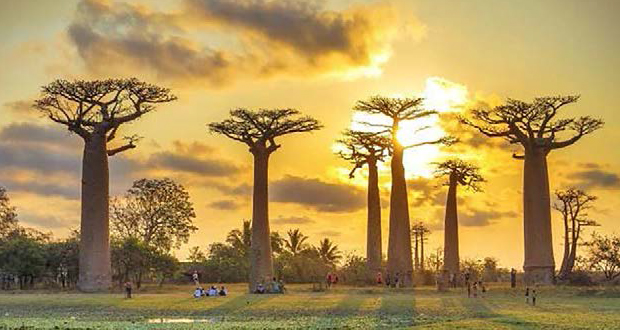Publicité
Environment: We are losing our Baobab and Mapou trees
Par
Partager cet article
Environment: We are losing our Baobab and Mapou trees

When the Mouvement Republicain organised demonstrations in 1990’s to protest against the felling of trees, we were branded as mad dogs who have nothing else to do. When the Mouvement Republicain through Gérard Lemaire and Firoze Aucharaz lodged a formal complaint against the uprooting of Flamboyants and Terminaya Arjuna at the Rose- Hill Police Station, they were made a laughable punching ball. And the mad man in chief was to many your humble servant.
We care a lot (am I being too optimist like Jean Paul Sartre?) about the 5000 endangered animals and not enough about the endangered trees over the blue planet. If only we care a little. Trees are vital to all of us and to the future generation for the following basic non-exhaustive reasons:
- Trees produce oxygen. One matured tree can produce enough oxygen for ten people to breathe for 365 days;
- Trees clean the soil. Trees are known to filter sewage, chemicals, limit the effects of waste and act as a filter for water running rivers. The poplar tree absorbed a well-known carcinogen known as carbon tetrachloride;
- Trees purify the air. Tress absorb all sorts of odours, pollutant gases and filter particulates out of the air by trapping them on their leaves and their barks… and do you know which tree purifies air the most? The Peepal tree. That’s why you will see Peepal tree in the yards of Kovil, Shivalas and Kalimas.
- Through the process of photosynthesis (I learned the process from my biology teacher at St Andrews, Mr Lee Chow Min, who is no more in this world that trees absorb carbon dioxide and reduce the greenhouse effect);
- Trees provide us with food-shelter-medicineshade;
- Trees are the homes for birds, mammals, and insects. Trees are good for birds and mammals;
- Trees cause rainfall;
- Trees protect our underground water resources;
- Trees protect children from ultra-violet rays. In all our school playgrounds, we in Mauritius we are laying out a carpet of cement after having “destroyed” the trees;
- Trees muffle sounds from the streets and other main roads while creating an eye soothing canopy of green. Tree also act as a “wind protector”;
- Trees reduce violence. All the “big NHDC” we have constructed are devoid of trees and the government does not care…
I hope I am whetting your appetite for saving trees…
Our Bois Dentelle… there are only two and thanks to the outstanding work of the Mauritian Wildlife Foundation, our Bois Dentelle (here “our means all the inhabitants of our blue planet and not only for Mauritians) has not become another Dodo. The flowers of the Bois Dentelle are a treat to the eyes. No need to have a cultured eye. The petals are lacy… The petals are the joyful tears of angels as Mauritius was created before Heaven…
But I genuinely fear for our Baobabs and our Mapou trees. Yes, I fear for them. Will the Ministry of Agriculture or the Ministry of Environment undertake to have a survey of all Baobab and Mapou trees in Mauritius? Will out government set up a unit with proper financing to monitor the Baobab and the Mapou?
Over the last years, ancient African Baobabs have been dying. The Baobabs are dying, collapsing and disintegrating without any good scientific reason for that sad phenomenon. Since 2005, eight out of thirteen of Africa’s oldest baobab trees have departed from our blue planet.
The baobab is also known as the “tree of life”. The irony of life is that they are dying. Are the baobabs sending us a signal. Is it climate change?
Two important facts:
- l Between 2010 and 2011, the Panke Baobab tree which was estimated to have been 2,450 years old has died.
- In April 2017, the Sunland Baobab tree (famous due to the presence of a bar in its belly) fell over.
The “Avenue of the Baobabs” which is located in Western Madagascar near Morondava town is the only avenue of baobabs in the whole world. Madagascar has six of the nine species of baobab. Madagascar is blessed to “host” the world’s largest baobab tree which is called Reniala – Malagasy term for “mother of the forest”.
The baobab is known to have more than 300 uses. It’s time to fear for the baobabs of Mauritius. Why are we so insensitive to the baobabs? Do we have a registry of all baobabs in Mauritius?
The baobab is known to have more than 300 uses. It’s time to fear for the baobabs of Mauritius. Why are we so insensitive to the baobabs? Do we have a registry of all baobabs in Mauritius?
Will the government stand up for the baobabs? Or is ignorance of the existence of the baobab running the day? I fear also for the Mapou tree which fruits very few Mauritians have ever tasted! Do you want to see a majestic Mapou tree? If yes, go to St Anne Road Stanley and you will find one in the yard of St Anne church…
The Mapou tree is endemic to Mauritius. It is known as the “Mauritian baobab”. It is not related to the baobabs of Africa. It is a member of the grape family… The French named the village Mapou after the Mapou tree.
I fear that the big Mapou trees are sadly fated to disappear. Will the government stand for the Mapou trees at least to woo some lovers of trees?
Lovers of trees are growing by numbers, particularly in the younger generation and they do vote.
Publicité
Publicité
Les plus récents






